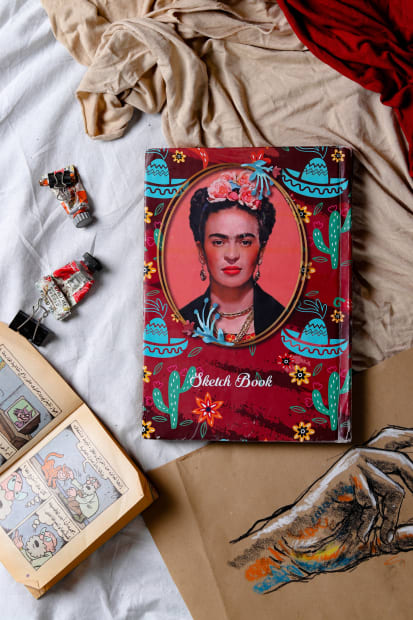-
- Emotional Intelligence and Self-Awareness: The Building Blocks of Success Emotional intelligence (EI) is the capacity to recognize, understand, and manage our emotions and those of others. This concept gained prominence in the 1990s, thanks to the influential work of psychologist Daniel Goleman. In his groundbreaking 1995 book, "Emotional Intelligence: Why It Can Matter More Than IQ," Goleman argued that EI is a key determinant of success in life, often more important than traditional measures of intelligence.
Self-awareness, a core component of EI, involves being cognizant of our thoughts, feelings, and actions. By developing emotional intelligence and self-awareness, individuals can make better decisions, forge stronger relationships, and maintain a healthy mental state. Research has shown that people with high emotional intelligence are more likely to be successful in various aspects of their lives, including personal relationships, professional endeavors, and overall well-being.
As emotional intelligence has gained recognition, numerous techniques have been developed to help individuals enhance their EI. One such approach involves engaging with art, which can serve as a powerful tool for fostering emotional intelligence and self-awareness. By harnessing the power of art, we can strengthen these essential life skills and unlock our full potential.
-

- Emotional Expression through Art: A Path to Emotional Clarity Art serves as a powerful means for expressing emotions that may be difficult to convey through words. By engaging with art—either by creating it or observing it—individuals can safely explore their emotions, gaining a deeper understanding of their feelings and boosting their emotional intelligence. Experimenting with different art forms such as painting, drawing, or sculpture can facilitate emotional exploration and self-expression, providing an opportunity to externalize and process emotions in a tangible way.
For example, abstract expressionism, an art movement that emerged in the mid-20th century, is known for its focus on emotional expression. Artists like Jackson Pollock and Mark Rothko used color, form, and texture to convey complex emotions and inner states. By observing these works, viewers can experience and reflect on the emotions depicted, while creating similar works allows individuals to channel their emotions onto the canvas, fostering emotional clarity and self-understanding.
Another example is the use of art therapy, a mental health practice that combines the creative process and psychological counseling. Art therapy enables individuals to explore their emotions through artistic expression, helping them to better understand and manage their feelings. This form of therapy has been found particularly useful for individuals dealing with trauma, grief, anxiety, or depression, as it offers a non-verbal outlet for processing and expressing emotions.
In addition, engaging with art forms like poetry, dance, or music can also contribute to emotional intelligence by providing opportunities for emotional expression and exploration. For instance, writing a poem about a personal experience or dancing to express one's emotions can be therapeutic and help develop self-awareness, ultimately leading to a deeper understanding of one's emotional landscape.
-

-

- Developing Empathy through Art: Building Emotional Connections
Art facilitates the development of empathy, which is the capacity to understand and share the feelings of others. Engaging with art can enhance our ability to connect with others' emotions—an essential aspect of emotional intelligence.
A. Art as a Window into Human Experience Experiencing art often involves interpreting the emotions, intentions, and perspectives of the artist or the subject matter. This process helps develop a deeper understanding of others' feelings, strengthening our empathetic abilities.
B. Storytelling and Empathy in Art Many forms of art, such as literature, film, and theater, involve storytelling that captures the human experience. Engaging with stories and characters nurtures our empathetic skills and fosters understanding of others' experiences.
C. Art and Cultural Understanding Art can serve as a bridge between cultures, offering insights into the experiences, beliefs, and emotions of people from diverse backgrounds. By engaging with art from different cultures, we foster empathy and understanding, contributing to a more inclusive society.
D. Collaborative Art and Empathy Building Participating in collaborative art projects or engaging with community-based art can foster empathy. These activities involve working together with others, understanding their perspectives, and sharing emotional experiences, developing stronger emotional connections and empathetic skills.
-

- Practical Tips for Integrating Art into Your Life: Unlocking Emotional Growth To experience the benefits of art in developing emotional intelligence and self-awareness, consider the following practical tips:
- Regularly visit art galleries, museums, and exhibitions to expose yourself to a diverse range of artistic styles and expressions. Reflect on your emotional reactions to the artworks you encounter.
- Dedicate time to creating your own art, experimenting with various mediums and techniques that resonate with you. Treat the creative process as a form of self-discovery and emotional exploration.
- Participate in art workshops, classes, or clubs to deepen your understanding of art and enhance your emotional intelligence. These settings can also provide opportunities for meaningful connections with like-minded individuals.
- Keep an art journal to document your thoughts, emotions, and experiences as you engage with art. This can serve as a valuable tool for reflection and self-awareness.
Conclusion: The transformative power of art in developing emotional intelligence and self-awareness is undeniable. By embracing artistic exploration and engaging with our emotions, we can foster personal growth and improve our ability to understand and connect with others. Start harnessing the benefits of art today and embark on a journey toward greater emotional intelligence and self-awareness.




